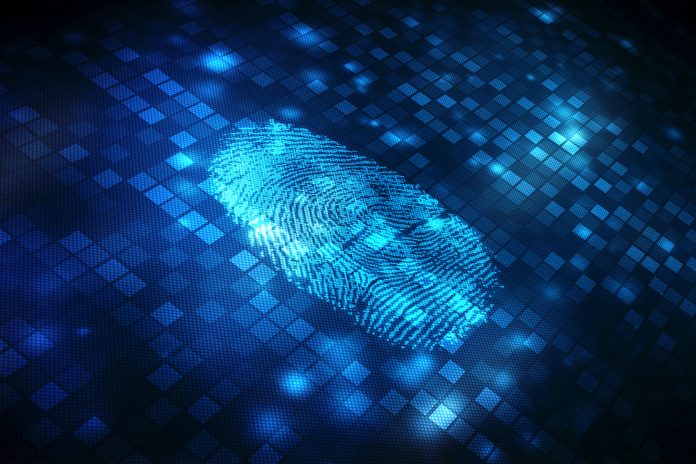Here, Robert Zapfel, iov42 Founder, outlines the top 5 digital identity trends that are injecting trust back into governance and enterprise
Digital identity is fast becoming recognised as one the most innovative technology trends of the past few years, as the world continues to embrace new tools geared towards a post-pandemic society. From health records to product authenticity, a monumental shift in the way that individuals, governments and businesses interact with each other is underway, and shows no sign of slowing down.
1 – Decentralised identifiers and self-sovereign identity
With our lives becoming more digitised, there is a growing concern about our ability to control our personal data and protect our digital identities. A trend that is emerging as a potential solution to this is the evolving concept of self-sovereign identity (SSI). According to the SSI model, each individual has ultimate control over their identity and is the final arbiter of who can access and use this data. The realisation of SSI has become possible in recent years thanks to advances in cryptography.
One prominent approach to implementing a real-world SSI model depends on decentralised identifiers (DIDs), verifiable claims (VCs) and other related standards from the World Wide Web Consortium (W3C), the internet standards organisation behind ubiquitous internet protocols like HTML and HTTPS.
As early SSI use cases develop and legal and political institutions evolve, the reality of impactful, integrated SSI systems becomes more tangible. Such use cases include privacy-preserving vaccination certificates, digital identity wallets, and decentralised data verification and certification services that streamline processes like visa applications and workplace credential checks.
2 – Zero knowledge proofs
Blockchain and other distributed ledger technologies (DLTs) have the potential to bring about huge advantages for governments and organisations, such as increased transparency, immutability and the decentralisation of data, but zero-knowledge proofs add yet another level of security by providing the owner with much more control of their own personal information. Zero-knowledge proofs are an encryption scheme whereby one party can prove the truth of specific information to the verifier, without disclosing the information itself. In practice, this means employers are able to check that applicants are over the age of 18, for example, without needing their exact date of birth, or any other sensitive data.
3 – Encrypted health records
The concept of electronic health records (EHRs) is nothing new, but the conversation around how to improve onerous EHR infrastructures continues. DLTs are becoming an increasingly popular option to enhance the security and efficiency of EHR systems. By securing a patient’s EHR on an permissioned DLT, the data is permanently stored in a secure, online environment that is accessible to the relevant parties, such as approved medical staff and the patient. DLT-based EHRs would serve as a single, trusted source of a patient’s medical history, providing medical teams with the most accurate and up-to-date information; DLT-based EHRs make it possible for patients to control who can access their data and what they do with that data.
In the coming years, it may also be possible to combine DLT-based EHRs with homomorphic encryption, which would enable patients to allow third parties to run computations on their encrypted health data — for research, for example — without the need for decryption therefore completely protecting their personal information by keeping it private. By providing safer mechanisms for the exchange of health information and medical data, DLT is reinventing the way that our electronic health records are both shared and stored.
4 – Identity of Things
The rise of the Identity of Things (IDoT) and tokenisation means that digital identities aren’t just for humans anymore. Anything from a mobile device to a bottle of fine wine can have a unique digital identity. To bridge the gap between a physical product and its digital identity, tagging technologies like tamper-evident NFC (near field communication) and QR codes can be represented (i.e. tokenised) on a blockchain or other DLT platform. This permanently links an object with its unique, digital identity. These digital identities can then be tracked and traced, which means that a product’s entire lifecycle can be captured. This not only has implications for proving an object’s provenance and authenticity, but it also lays the foundation for things like digital product passports (DPPs), which bodies like the European Commission are pursuing to enable circular economies.
5 – Enterprise-grade blockchain tools
Because blockchain networks largely started off as pseudonymous, the purported benefits of the technology — including security, immutability, and transparency — were largely inaccessible to applications that required a higher level of security clearance or regulatory compliance, such as e-government services. However, newer blockchain models are integrating digital identity in an attempt to enhance the accountability of their networks. By coupling secure digital identities with the transparency and traceability provided by blockchain, it becomes clear exactly which activities are being performed by whom, enabling new levels of accountability and efficiency.
Enterprise-grade blockchains are already being leveraged by the public sector. For example, the European Blockchain Services Infrastructure (EBSI) uses blockchain to improve the scalability, energy efficiency and security standards of services for public administrations, citizens, and businesses. These services, which include things like interoperable university diplomas and cross-border notarisation capabilities are also important to increasing the robustness and trustworthiness of digital identities.
Iov42 is a UK-startup that has been selected by the EU to shape the future of their digital infrastructure. Follow Iov42 on twitter and linkedin.’











